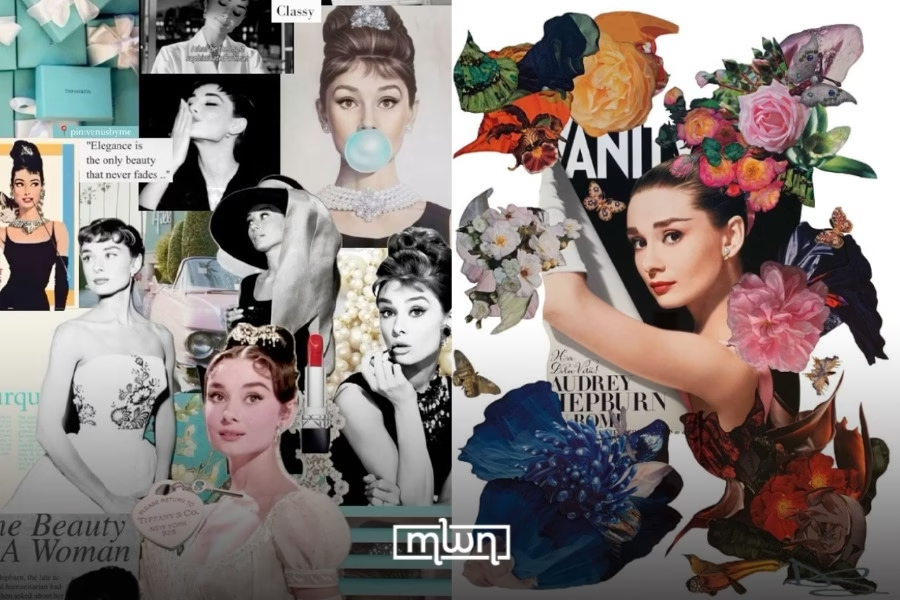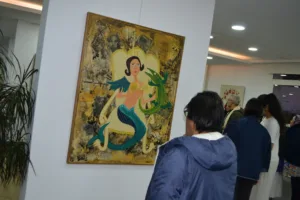The “little black dress” celeb lived a life that blurred the lines between cinema, style, and quiet heroism.
Fez– Audrey Hepburn wasn’t just a Hollywood starlet, she was a woman who reshaped what it meant to be both glamorous and good.
Born Audrey Kathleen Ruston on May 4, 1929, in Brussels, she would go on to embody a new kind of femininity: elegant yet unpretentious, delicate but resilient.
Decades after her death in 1993, her legacy remains alive in both the film world and the fashion industry, not to mention the global humanitarian work she pursued with striking commitment in her final years.
Her early life was anything but cinematic. The daughter of a Dutch baroness and a British father who claimed descent from Scottish nobility, Hepburn had a multicultural upbringing that spanned Belgium, England, and the Netherlands.
Her childhood, however, was disrupted when her father left the family. Then, at the start of World War II, her mother relocated them to the Netherlands, hoping it would be safer.
But safety was an illusion. Hepburn spent her adolescent years under Nazi occupation, enduring hunger, fear, and isolation. She attended school and took secret ballet lessons, and for a time went by “Edda Van Heemstra” to avoid attracting attention for her British background.
Those years would mark her deeply, and the trauma of war shaped her lifelong compassion.
After the war, she resumed ballet training in Amsterdam and London. She worked briefly as a model, and began appearing in small film roles.
But her life changed in Monte Carlo, when French writer Colette spotted her and insisted she star in the Broadway adaptation of her novel “Gigi”.
Hepburn, still largely unknown and with no stage experience, was cast in the lead, and critics loved her.
Then came “Roman Holiday” (1953), the breakout role that made her an international sensation.
As a princess longing for freedom, opposite Gregory Peck, Hepburn was luminous: mixing grace, vulnerability, and youthful mischief.
The performance earned her an Oscar for Best Actress, and more importantly, it introduced the world to her rare screen presence: charming but never flashy, intelligent but never pretentious.
Over the next decade, she delivered one hit after another. “Sabrina” (1954), where she first wore designs by Hubert de Givenchy, cemented her status as a style icon.
“Funny Face” (1957), “The Nun’s Story” (1959), “Breakfast at Tiffany’s” (1961), “Charade” (1963), and “My Fair Lady” (1964) showcased her range, from romantic comedy to serious drama.
Her portrayal of Holly Golightly in “Breakfast at Tiffany’s” became a cultural landmark, though it’s worth remembering the character’s emotional complexity beneath the iconic little black dress.
Despite her success, Hepburn never became addicted to fame. In 1967, after “Wait Until Dark”, she stepped back from acting.
Her personal life had changed, she divorced her first husband, Mel Ferrer, and remarried an Italian psychiatrist, with whom she chose a quieter life focused on her children.
She returned occasionally to the screen, but it was her work with UNICEF in the 1980s and early 1990s that defined her final chapter.
She traveled to some of the world’s poorest regions, advocating for children with humility, not fanfare.
Audrey Hepburn died of cancer in 1993, but her story didn’t end there. She posthumously received the Jean Hersholt Humanitarian Award, and today her name is associated as much with compassion as it is with couture.
She wasn’t just the face of a generation, she was its conscience too.
Read also: Inwi Strengthens Its Commitment to Moroccan Gaming at the 2025 Expo
















